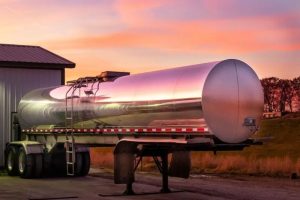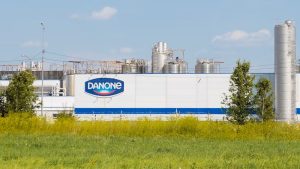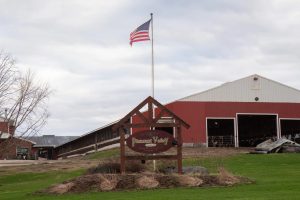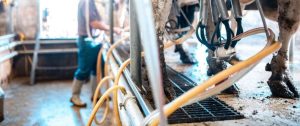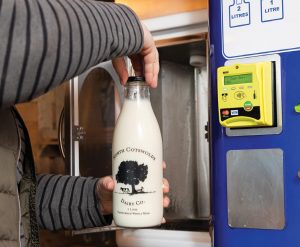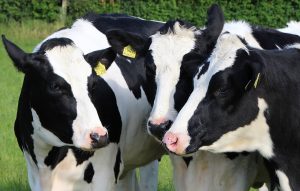
The shrinking pool of workers in rural areas is a real concern as populations decline and economic opportunities increase in countries that have historically been sources of agricultural labor for the U.S.
As the dynamics of the global workforce continue to evolve, so too must the strategies to hire and retain an adequate on-farm labor force in the U.S.
The shrinking pool of workers in rural areas is a real concern for farmers, says Richard Stup, senior Extension associate and agricultural workforce specialist with Cornell Cooperative Extension. One striking example is the declining birth rate in countries, such as Mexico, that historically have been sources of agricultural labor for the U.S.
“[The population in] Mexico, going forward, will begin to actually shrink,” he shared at the 2025 Western Dairy Management Conference. “It’s not just Mexico. There are a lot of countries in this situation.”
In addition to a smaller pool of workers willing to fill on-farm vacancies, economic opportunities in these countries, such as an increase in Mexico’s inflation-adjusted dollars, are reducing the push factor for migration.
“It means there’s more economic activity, there’s more job opportunity and there’s less push to leave Mexico and go to the U.S. for dollars,” he says. “There’s still a lot of push to come up here, but it’s not what it used to be.”
When looking at the data, Stup notes fewer young people are looking for work.
“The average age of foreign-born employees is about 42 years,” he says. For comparison, the average age of U.S. born employees on farms is 36 years old.
Two Employment Solutions
Despite these dynamics, immigration will still play a significant role in sustaining the on-farm workforce. To address workforce challenges, Stup says a couple programs exist:
- One is the H-2A visa program, which allows an unlimited number of agricultural workers to enter the U.S., provided the work is temporary or seasonal.
- Another viable option is the TN Visa, born from agreements such as NAFTA, enabling skilled professionals from Canada and Mexico to enter the U.S. for professional endeavors.
Navigating these pathways requires producers to have their paperwork, such as I-9 forms, in order, especially with current enforcement trends focusing on individuals with criminal backgrounds.
“It seems pretty consistent that most of the enforcement from ICE is in pursuit of individuals that have some kind of criminal background,” he shares.
With an estimated 11 million undocumented immigrants in the U.S., producers are advised to stay vigilant and prepared. It’s important to keep necessary documentation, such as I-9 forms, social security copies and identification such as driver’s licenses, well-organized and readily accessible, encourages Jamie Castaneda, executive vice president of policy development and strategy for the National Milk Producers Federation. Ensuring all paperwork is in compliance with federal and state laws is paramount if faced with an Immigration and Customs Enforcement inspection.
Embrace Technology and Workforce Development
Technology offers solutions to improve on-farm efficiency. Artificial intelligence (AI), for instance, can optimize tasks, allowing human workers to focus on animals requiring attention.
“Technology is going to be used in places where the work is repetitive and where it’s kind of heavy manual labor,” Stup says.
Workforce development is crucial as well. Supup underscores the need for retention programs and attracting a diverse pool of workers. Skills such as critical and systems thinking, data savviness and comfort with animals will be essential for future dairy workers. Education, whether formal or through on-the-job training, is equally important.
Build a Supportive Work Environment
To attract and maintain a robust workforce, it’s essential to create a positive work environment. Stup highlights the role of supervisors in leading effectively by setting clear expectations, providing necessary training and development, and giving constructive feedback on performance.
“We need to do what we can to retain and create a great place to work,” he says, noting supervisors need to lead effectively.
Supervisors need to spell out three main factors for employees:
1. Expectations. Clearly communicate what is expected of employees, including job descriptions, SOPs and onboarding.
2. Training and Development. Train, coach and use other efforts to teach knowledge, skills and attitudes.
3. Feedback. Give employees information about their performance to help them improve.
The future of the on-farm workforce will be diverse, comprising immigrants and individuals from various backgrounds, including those from urban environments new to agriculture. Balancing the need for manual and mental labor remains appealing, drawing in those uninterested in traditional office roles. The key is to retain and foster talent in the agriculture sector, giving rise to a dynamic and inclusive workforce that will carry the industry forward.
By adopting these strategies, farms can adapt to the shifting landscape, ensuring productivity and sustainability in the face of workforce changes.
You can now read the most important #news on #eDairyNews #Whatsapp channels!!!
🇺🇸 eDairy News INGLÊS: https://whatsapp.com/channel/0029VaKsjzGDTkJyIN6hcP1K




